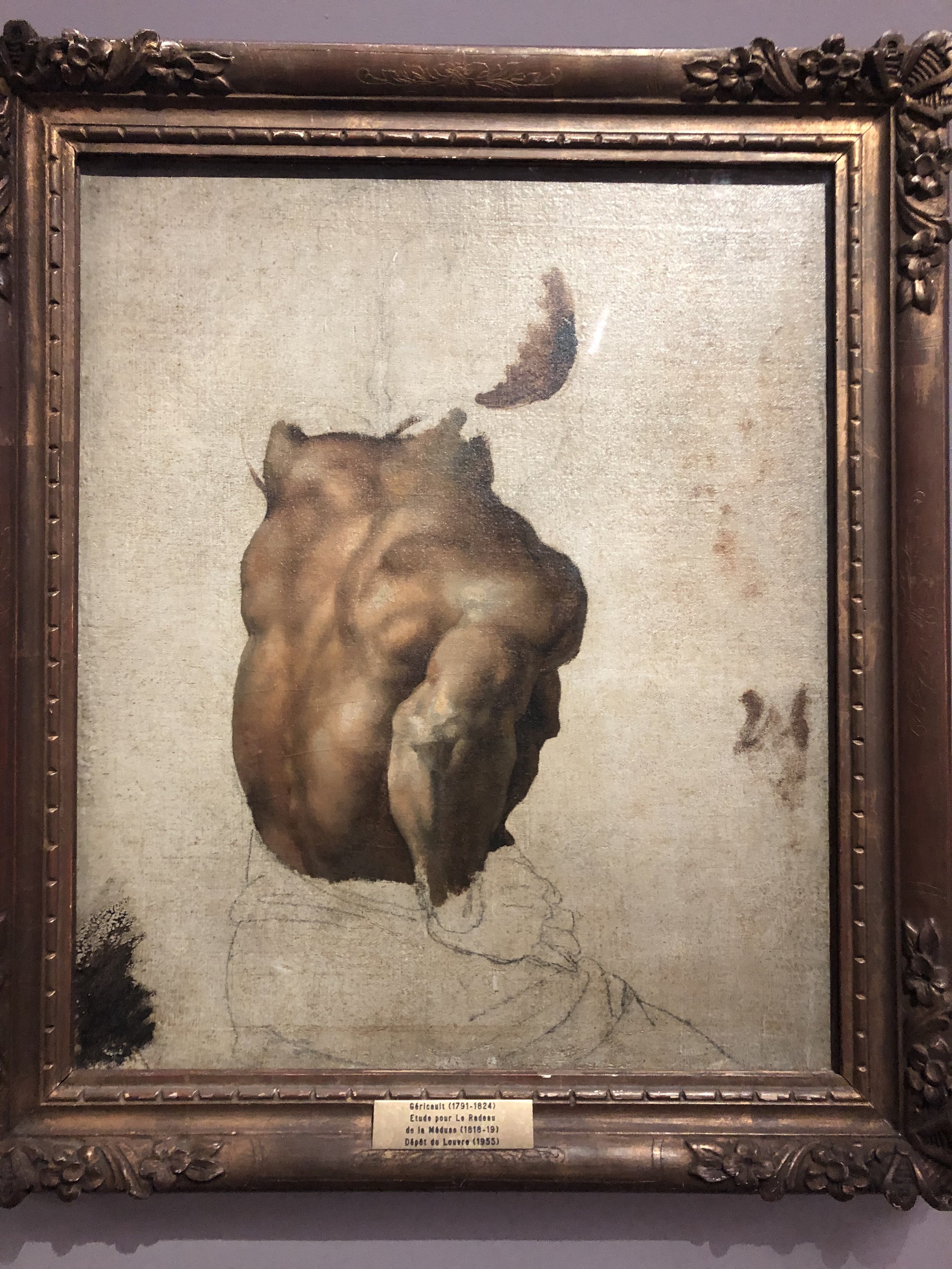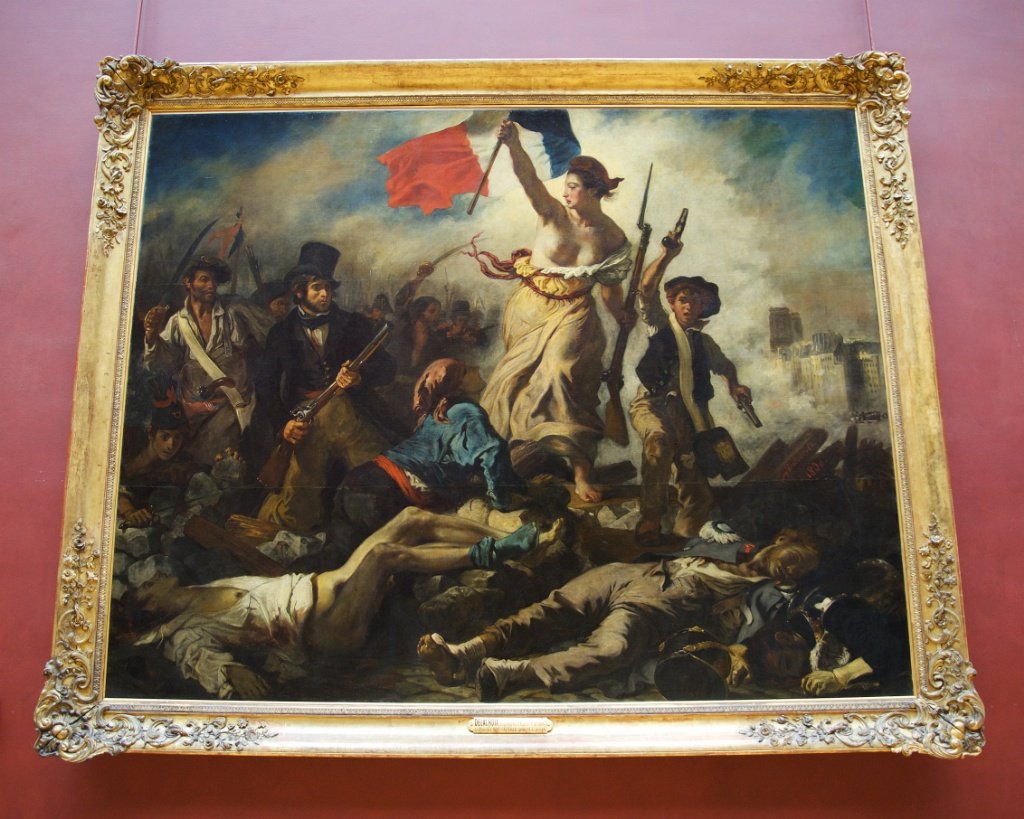In this week’s new episode of La Vie Creative - Paris History Avec a Hemingway we share a slice of French art history known as Romanticism.
Maybe a few of these are your very favorite artists or paintings and know when you put it all together you realize you love the Romanticism era as much as I do. Charles Baudelaire said in 1846 that “The period could not be defined by its subject but by the way the artist feels”.
Through color, intimacy, spirituality, fluid forms and visible brushstrokes the paintings of Delacroix, Géricault and Chassereau come alive and defy the period. The period begins at the end of the Revolution and charging their path far away from Neoclassicism with its porcelain skin and void of any sign of the artist in brushstrokes.
Jacques Louis David’s students Jean-Auguste Ingres and Antoine Jean Gros tiptoed over the line when they brought a bit more emotion into their pieces. In 1804 Gros jumped head first into the Napoleon propaganda machine when commissioned by the man himself to rewrite the narrative of his time in Jaffa. Gros painted Napoleon Visiting the Plague Victims of JaffaI. An episode that happened on March 21, 1799 but the visit in truth was the poisoning and killing of over 50 people. That is not what is in the painting, bien sûr, instead Gros paints the Emperor reaching out and touching an infected victim.
This stance was a well used biblical scene, Christ healing the sick, and gives the feeling that Napoleon could heal the sick and that he was immune to any disease making him god-like. In the right corner men are dead or dying and others reach out for help. When he returned to Paris and word began to spread of what really happened Gros was brought in for damage control.
Jean Auguste-Dominique Ingres born August 29. 1780 was just 11 when he enrolled in the art academy in Toulouse and at 16 was in the atelier of David. His most gifted student quickly moved away from the master. In 1827 Ingres was commissioned to do a ceiling in the Musee Charles X inside the Louvre and inspired by Raphael’s Vatican fresco he gathered the great artists and authors in European history including Raphael, Michelangelo, Poisson and Dante. It was also his way of letting these young up and coming artists that were beginning to blur the edges of art to remember where it came from.
Théodore Géricault born in 1791 studied under Pierre-Narcisse Guérin who trained many of the Romantic greats including Ary Scheffer and where Géricault met Delacroix. As with many artists in the 19th and 20th century they also would learn at the feet of the masters within the walls of the Louvre. Copying the paintings of Titian, Rembrandt and the artist that influenced the period Ruebens.
Géricault’s masterpiece Raft of the Medusa stretching across the wall twenty-three feet was painted when he was just 27 years old. So large he needed to rent a larger atelier and to get the bodies just right he built a lifesize model and even brought body parts from the morgue to study as they rotted. Based on the actual shipwreck and rescue of the crew it was a huge political and controversial episode in French history. Géricault brought in all the emotions of the scene. In the top it shows a man waving a rag to alert the ship on the horizon but in the foreground of the piece a father holds his son that is dead from sliding into the water.
As the men died, the others used them to survive as they floated out at sea. Close to 150 men crowded on a large raft and only 15 survived the two week ordeal. So devoted to the theme Géricault even interviewed the survivors to get every horrific detail correct.
For the models, he used one of his favorites, a gorgeous Haitian named Joseph. It’s Joseph we see waving the rag at the top of the raft. A few years ago the Musée d’Orsay held an amazing exhibit dedicated to the black model in art and giving them a name, as well as sharing other sketches and paintings. It was fantastic. You can find more HERE.
Another model was a young artist that was so moved when he saw the painting in his atelier that he ran through the streets screaming. Éugene Delacroix was just 19 and couldn’t believe what he saw. Many people incorrectly attribute the man in the top hat in Delacroix’s Liberty to either being the artist himself or Géricault. It is actually in the Raft that we find Delacroix. The man lying on his stomach reaching out his hand to the board is the young Delacroix who would become the leader of the entire period.
Just 5 short years later Géricault died at 32 years old, but left behind one of the most amazing pieces of the period and can be seen in the Louvre not far from his friend Delacroix.
Walk over to Liberty Leading the People and notice the bodies in the lower left side and see if they remind you of the Raft and a nod to their great friendship.
Delacroix wasn’t going to be an artist, he was going to be a writer but at 17 he could be found in the Louvre copying the masters hoping that one day his name would be mentioned in the same category. The romantic words of Lord Byron, Shakespeare and Greek dramas came to life on his canvas with the master touch of color.
In January 1832 he went to Morocco and was given special permission to visit a harem and sketch the women. In 1834 it became the Women of Algers that has recently been restored and return to the Louvre on January 12, ninety years after he first sketched it. The stunning restoration removed the yellowed varnish and restored the colors. A temporary banner shows you an up close before and after. The same painting inspired Picasso to reimagine the same scene in his own Picasso way.
Delacroix died on August 13, 1863 and Baudelaire also said that with the death of Delacroix so was the death of Romanticism. His works still hang in the churches and government buildings and of course the Louvre and Musée Delacroix and inspire artists even today.
A young Manet would visit the Louvre and copy the same masters that taught those that came before him. He would later also copy Delacroix.
Join us as we walk through a few of the artists of the period and what end up being some of the most popular paintings in the Musée du Louvre. And in a few weeks check back as we explore the authors of the period who not only wrote some of the most loved pieces in French literature but also saved a beloved monument.






